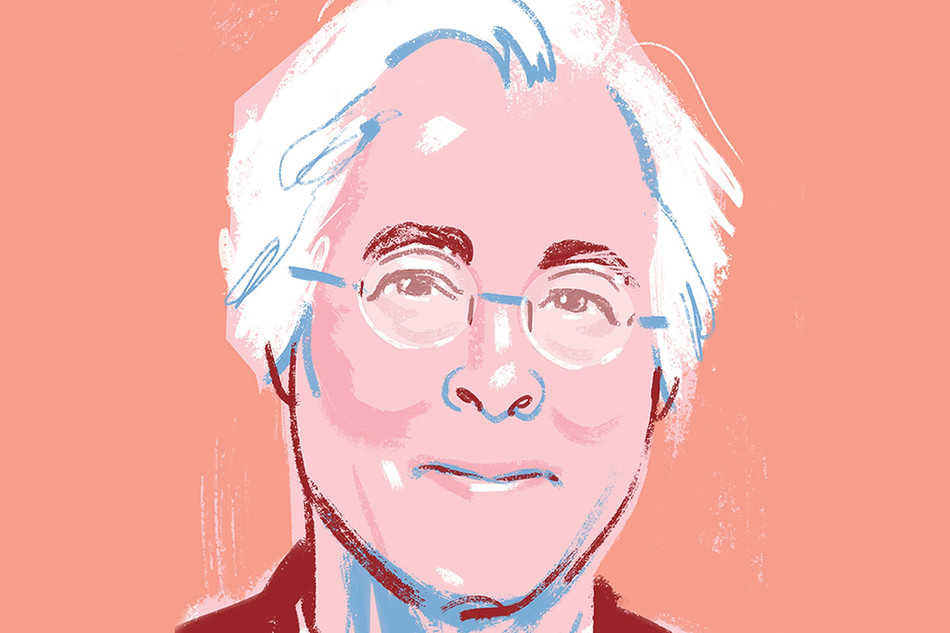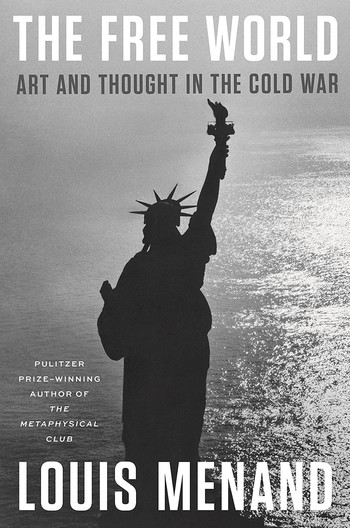In The Free World, New Yorker staff writer and Harvard professor Louis Menand ’80GSAS takes a “street-level” look at one of the most fertile cultural and intellectual periods in recent history.
In its eight-hundred-plus pages — all of them riveting — The Free World presents an epic survey of major mid-century movements, including existentialism, abstract expressionism, the Beat movement, second-wave feminism, rock-and-roll, and dozens of other “big ideas” of that period. How did you choose what to include?
I didn’t choose, exactly. I had a few preconceptions that quickly got exploded, and then I just decided to follow the dotted line from one end of the period to the other and let the material dictate the story. But I wanted to tell that story on the street level — to show what it was like to be a painter in 1947, or the maker of a pop song in 1956, or an academic in 1962. I wanted to create a full context for these various phenomena, because although we know who Jackson Pollock is, and we know Elvis and so forth, we don’t necessarily understand the context that made their work possible. I wanted to capture that.
Let’s examine both parts of your book’s title. You write that during the Cold War — specifically, the twenty-year period between 1945 and 1965 — Americans were obsessed with freedom, and the phrase “the free world” was invoked constantly. You also write that in this period, art and thought were an “important battleground in the struggle to achieve and maintain a free society.” How did the two realms intersect?
Art and thought became a battleground because — since we didn’t want to go around actually shooting Russians — the Cold War was a war of ideas. One of its battlegrounds was definitions of art. The Soviets had an official aesthetic: socialist realism. If you were an artist, you could paint only in that style. The American aesthetic was diversity: in a “free” society, you could paint in any style you wanted. The principal battle in the Cold War was freedom versus equality. By choosing freedom as their motto, the liberal democracies implicitly acknowledged that a certain amount of inequality would be tolerated because, as Isaiah Berlin ’68HON observed in his famous essay on two concepts of liberty, freedom and equality are not commensurable values. If you give people greater freedom, some of them will be better off than others. If, on the other hand, you require equal distribution of resources, then some people’s freedom will be curtailed. This ideological battle gave rise to serious intellectual debate all over the world.
You’ve said this book recreates a “vanished world” — a phrase that especially resonates in your discussion of Claude Lévi-Strauss ’71HON, a once towering figure in twentieth-century thought. It was both fascinating and shocking to revisit his ideas — structuralism’s strict reliance on binaries, for instance, along with his theory that kinship revolves around men’s exchange of women — and realize how out of step they are with current thinking. Does Lévi-Strauss still matter, or is he “canceled” in today’s academic climate?
I’m not here to cancel anyone, obviously. But yes, in terms of binaries and the exchange of women — those ideas are dated. I’m not aware that Lévi-Strauss was personally a misogynist; this is all science, supposedly. Still, it’s bad science. But structuralism was an important school of thought, because it replaced physical anthropology with cultural anthropology as a way to talk about human difference in the decolonizing world. The even more consequential part of the story is that then Jacques Derrida ’80HON came along and blew up the whole binary thing, including the incest prohibition, which he said was a contradiction in terms: It can’t be universal and cultural at the same time. So today when we say binaries no longer work, that’s a legacy of Derrida. Poststructuralism taught people that. But I do love Lévi-Strauss’s 1955 memoir, Tristes Tropiques. Much of it is about the Anthropocene: he had a strong sense that human species would ultimately destroy themselves and disappear from the planet, like the sun in a sunset. And with that would go the whole cultural edifice they’ve built out of nothing. And one reason for this is globalization, because as cultures become more and more alike, it’s like heat death — you run out of adaptive possibilities and then one thing will wipe you out. The book is powerfully moving. And beautifully written. And probably true.
It was gratifying to read your section about the Négritude movement, which is somewhat unknown in the States — in part, perhaps, because we Americans tend to think of decolonization as something that was happening elsewhere in this period. Yet you make a strong case that it had a pervasive influence on American life and culture in the 1950s and ’60s. How so?
As other scholars have also noted, decolonization put pressure on the American government to fix the race problem in the US because it didn’t look good globally to be parading around as the country of freedom when we were oppressing a tenth of the population. The Civil Rights Act of 1964 and the Voting Rights Act of 1965 probably would not have happened in a pre-decolonizing world. Moreover, decolonization was the big story of these twenty years. The international map got completely rewritten, and in most cases these countries became governed by nonwhite people for the first time in modern history. That’s a huge deal — bigger, ultimately, than the Cold War.
What was James Baldwin’s connection to the Négritude movement?
Baldwin is a link between the French decolonization movement that he was exposed to when he lived in Paris — where he attended the First International Congress of Negro Writers and Artists in 1956 — and the American civil-rights movement, with which he got involved upon his return to the US in 1957. Although he did not personally identify with the Pan-African sentiments of Négritude and felt that American Blacks and Africans didn’t have that much in common, these arguments about race and culture clearly influenced his thinking.
Your book’s first and last chapters are on the US policy of containment, which was firmly rebutted by the Vietnam War. You chart the many mistakes made by various US administrations in pursuing military action in Vietnam. But why did US military involvement also mark the end of this extraordinary period of artistic and intellectual flowering?
I don’t really know why it all collapsed so quickly. But in 1965 the world turned, and suddenly everything was politicized, everything turned militant. The phrase “Black power” started being used, and antiwar protests began. Very rapid cultural and social change had taken place, and somehow Vietnam just lit a tinderbox. If I write another book, it will probably be an attempt to explain the Vietnam era. But it will be a different format — and a much shorter book!




